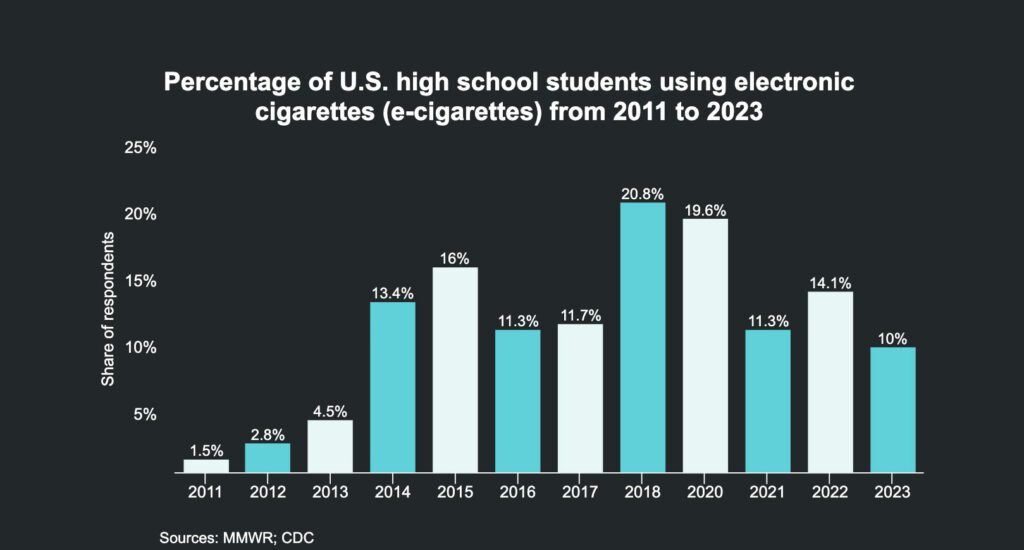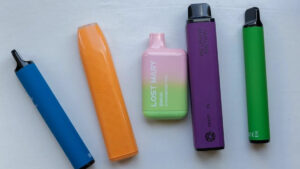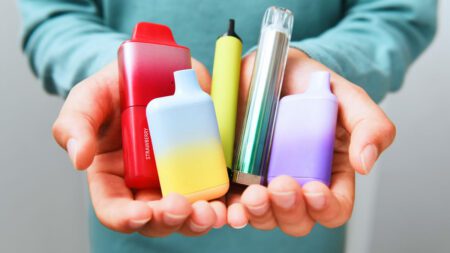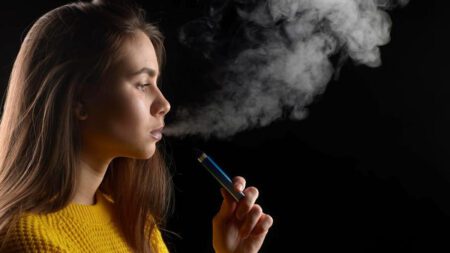Vaping has become increasingly popular among U.S. middle and high school students. According to a 2023 report, more than 1.6 million students reported vaping, with nearly 90 percent using flavored vapes. This youth vaping epidemic may not be a coincidence, as many of the top vape manufacturers are owned by big tobacco companies. Pamela Ling, M.D., MPH, Director of the UCSF Center for Tobacco Control Research and Education, sheds light on the alarming potency of vapes and the challenges in regulating them.
The Evolution of Vape Potency
A decade ago, the average vape cartridge contained nicotine equivalent to a pack of cigarettes (20 cigarettes). However, today's popular vapes can easily have the nicotine content of three cartons or 600 cigarettes. This dramatic increase in potency is made possible by the addition of acids to create "nicotine salts," a technology introduced by Juul Labs in 2015. These salts reduce adverse reactions like throat burning and coughing, enabling users to inhale higher concentrations of nicotine. The most popular disposable vapes now use this technology, making vapes stronger than ever before.
The Uncertainty Surrounding Vaping Safety
While it is believed that vaping exposes users to fewer chemicals and toxins compared to smoking cigarettes, the long-term safety of vaping remains uncertain. Observational studies suggest that the risk of lung disease may be reduced with vaping compared to smoking, but the risk of cardiovascular disease appears to be similar. Definitive data on whether vaping causes less lung cancer than cigarettes is not yet available, as it typically takes 10 to 20 years for someone to develop the disease.
The Vulnerability of Youth to Nicotine Addiction
The high rates of vaping among youth in the U.S. are particularly concerning because vapes deliver nicotine exceptionally efficiently. The earlier an individual is exposed to nicotine, the more likely they are to become addicted, as the brain continues developing until the age of 25. Teens who vape are 3 to 5 times more likely to start smoking cigarettes than their peers and have higher rates of asthma-like respiratory symptoms and mental health challenges.

The Allure of Vape Marketing
Vape companies have been able to utilize marketing strategies that are no longer allowed for cigarettes, such as sponsorships, giveaways, and appealing advertising targeting young people. Vapes are often marketed as pieces of technology to escape the negative connotations associated with traditional cigarettes. Social media advertising, which is difficult to regulate, has played a significant role in the popularity of vapes among youth. Juul, for example, deliberately sought out social media influencers to promote their products and gave away thousands of free Juuls at parties, effectively manufacturing a trend.
The Enticing Flavors of Vapes
Vapes come in thousands of flavors, many of which are highly appealing, such as bubble gum, crème brûlée, and chicken and waffles. Even if teens are not initially interested in nicotine, curiosity about the flavors can be enough to entice them. Due to the efficient nicotine delivery of vapes, addiction can develop quickly.
The Challenges of Vape Regulation
The FDA has faced numerous challenges in regulating vapes. It was not until 2016 that the FDA gained the authority to regulate the sale, advertising, and distribution of e-cigarettes. Although vape products must be approved by the FDA before being marketed, only 34 out of hundreds of publicly available vapes have been approved. The FDA sends warning letters to companies engaging in particularly egregious practices, such as selling vapes that resemble toys or video games, but the sheer variety of vapes makes comprehensive regulation difficult. Companies often exploit loopholes in regulations, which struggle to keep pace with the evolving industry.
The Importance of Tobacco Industry Research
The UCSF Center for Tobacco Control Research and Education is at the forefront of investigating the tactics employed by the tobacco industry. Through the Truth Tobacco Industry Documents, the world's largest archive of previously secret Big Tobacco papers, researchers are uncovering how companies' marketing strategies exacerbate health inequalities and influence scientific research and policies. The center is currently examining the recently acquired Juul documents to shed light on the company's tactics and their impact on communities disproportionately affected by tobacco's health consequences.
Conclusion
The alarming potency of vapes, with some containing the nicotine equivalent of 600 cigarettes, underscores the urgent need for effective regulation and public awareness. As the youth vaping epidemic continues to grow, it is crucial to understand the tactics employed by vape manufacturers, many of which are owned by big tobacco companies, to attract young users. Through research and education, we can work towards protecting the health of our youth and communities from the harmful effects of vaping.








